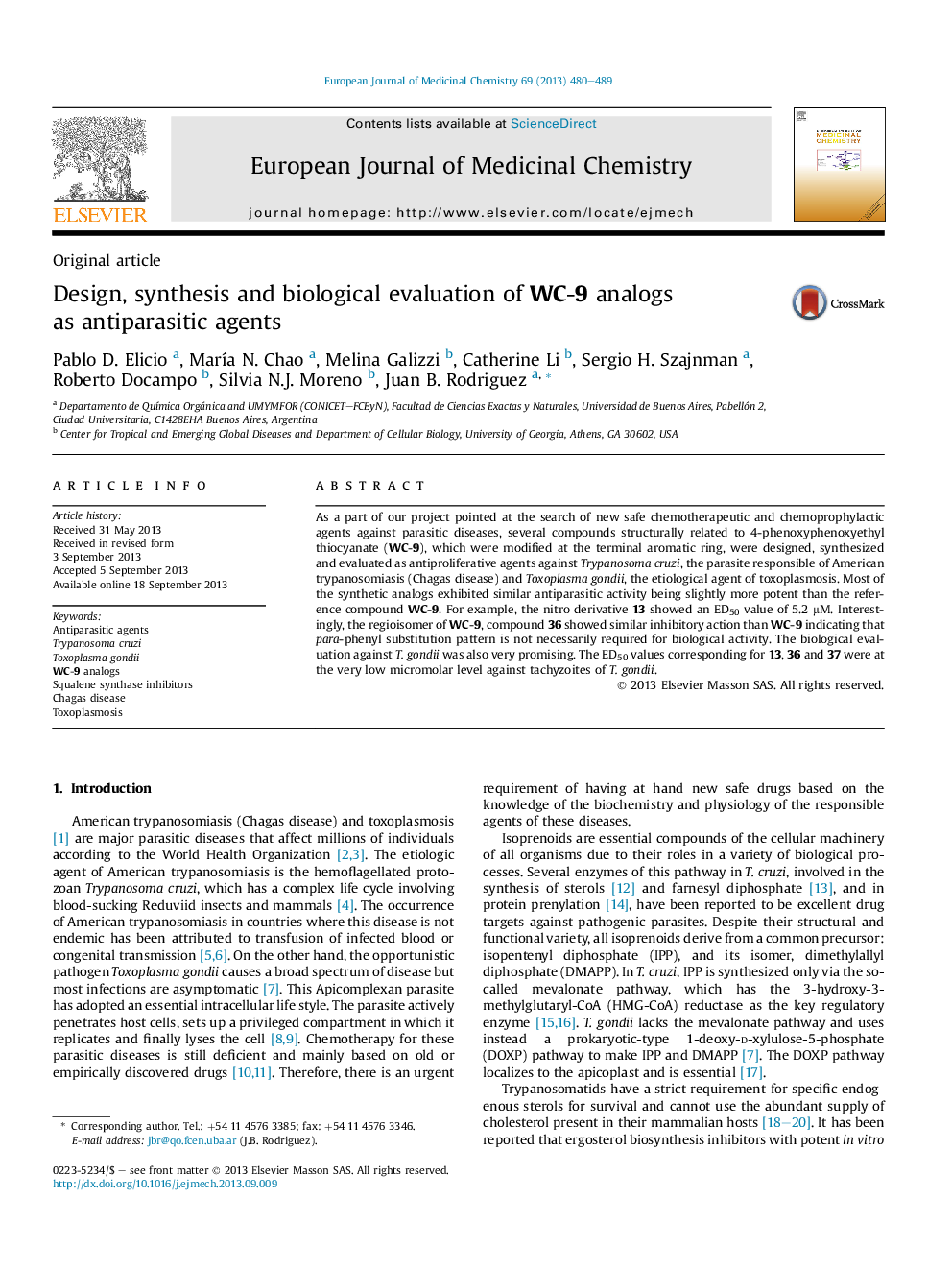| Article ID | Journal | Published Year | Pages | File Type |
|---|---|---|---|---|
| 1399019 | European Journal of Medicinal Chemistry | 2013 | 10 Pages |
•WC-9 analogs were active against amastigotes of Trypanosoma cruzi.•These compounds were also active against tachyzoites of Toxoplasma gondii.•These WC-9 analogs were putative inhibitors of squalene synthase.•Some compounds inhibited T. cruzi and T. gondii growth at the low micromolar range.
As a part of our project pointed at the search of new safe chemotherapeutic and chemoprophylactic agents against parasitic diseases, several compounds structurally related to 4-phenoxyphenoxyethyl thiocyanate (WC-9), which were modified at the terminal aromatic ring, were designed, synthesized and evaluated as antiproliferative agents against Trypanosoma cruzi, the parasite responsible of American trypanosomiasis (Chagas disease) and Toxoplasma gondii, the etiological agent of toxoplasmosis. Most of the synthetic analogs exhibited similar antiparasitic activity being slightly more potent than the reference compound WC-9. For example, the nitro derivative 13 showed an ED50 value of 5.2 μM. Interestingly, the regioisomer of WC-9, compound 36 showed similar inhibitory action than WC-9 indicating that para-phenyl substitution pattern is not necessarily required for biological activity. The biological evaluation against T. gondii was also very promising. The ED50 values corresponding for 13, 36 and 37 were at the very low micromolar level against tachyzoites of T. gondii.
Graphical abstractFigure optionsDownload full-size imageDownload as PowerPoint slide
